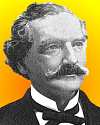
On 7 Feb 1814, the American lecturer Gardner Quincy Colton was born, who introduced an anaesthetic gas into dental use. Yet, he wasn't a dentist. He actually began giving public science lectures. You'll probably be able to name the gas he at first showed as a novelty in his lectures. But, did you know his diverse interests included being a Shakespeare scholar? He also invented a model railway in which he used the metal rails in the electrical circuit to power the locomotive's motor. He is remembered for his contributions to dentistry, and for more background on that, read Gardner Quincy Colton and Anesthesia. For a short account of his model railway, read Early Electric Railways.

On 7 Feb 1926, Konstantin Petrovich Feoktistov was born, Russian cosmonaut and space engineer who was part of the team that would go on to design the Sputnik, Vostok, Voskhod, and Soyuz spacecraft. Today's book pick is: The Rocket Men : Vostok and Voskhod, the First Soviet Manned Spaceflights, by Rex Hall, Shayler David who reveal the developmental and operational aspects which were formerly clouded in secrecy (which contrasts to the high profile American programme.) Just as the American one-man Mercury spacecraft gave way to the two-man Apollo series to the Moon with Apollo, the multi-crewed Voskhod series followed the single-seat Vostok. This chronicle of the rise of the Soviet space program draws on recently released archival information showing how the Soviet Union got ahead so quickly in the space race.
It is available from Amazon, typically about New from $32.33. Used from $17.62. (As of earlier time of writing - subject to change.)
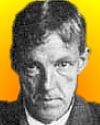 | Young men should prove theorems, old men should write books. |
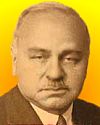 | The neurotic ... is nailed to the cross of his fiction. |
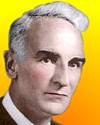 | The only royal road to elementary geometry is ingenuity. |
| Before you look at today's web page, see if you can answer some of these questions about the events that happened on this day. Some of the names are very familiar. Others will likely stump you. Tickle your curiosity with these questions, then check your answers on today's web page. | |
| Births | |
 | Gardner Quincy Colton, born 7 Feb 1814, was an American anesthetist and inventor who was among the first to utilize the anesthetic properties of a certain gas in medical practice. After a dentist suggested the use of the gas as an anesthetic, Colton safely used it in extracting thousands of teeth. What was this anesthetic gas? |
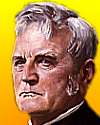 | A pioneer American inventor, born 7 Feb 1804, was a manufacturer of agricultural implements. Beginning as a blacksmith, he found that frequent repairs were necessary when the wood and cast-iron plows of the eastern U.S. were used in the prairie where he set up business. The local soils were heavy and sticky. By 1838 he had produced three plows of his own new design which led to starting his agricultural machine business. This company is still is well known by his his name. Can you name this man, whose company now is also well-known for tractors? |
| Deaths | |
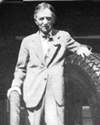 | Harvey S. Firestone (1868-1938) was an American industrialist who started the Firestone Tire and Rubber Company in 1900. He was responsible for a number of industry innovations, including the production of pneumatic tires, nonskid tire treads, low-pressure balloon tires, and farm tractor tires. By the late 1930s, nearly a quarter of all tires being used in the United States were Firestone tires. On which model car was his straight-side pneumatic tire introduced? |
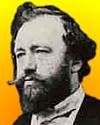 | Antoine-Joseph Sax (1814-1894) who took the name Adolphe, was a Belgian-French maker of musical instruments and inventor of the saxophone, saxtromba, and sax horn. By combining the clarinet’s single reed and mouthpiece with a widened oboe’s conical bore, Sax created an new instrument with its distinctive, big sound. What material did Sax use for his first saxophones? |
| Events | |
 | On 7 Feb of a certain year, the “neutron” was described in an article in the journal Nature by its discoverer, James Chadwick, who coined the name for this neutral particle present in the nucleus of atoms. In which decade was this article published? |
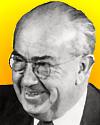 | On 7 Feb 1935, Charles Darrow's game was first marketed. Its symbol was Rich Uncle Pennybags. His patent described a “Board Game Apparatus … intended primarily to provide a game of barter, thus involving trading and bargaining” in which “much of the interest in the game lies in trading and in striking shrewd bargains.” By what name is this game now known? |
Fast answers for the previous newsletter for February 6: Louis Leakey • electrical resistance • oxygen • frozen during Winter • decade which includes the year 1976 • golf.
 If you enjoy this newsletter, the website, or wish to offer encouragement or ideas, please send feedback by using your mail reader Reply button.
If you enjoy this newsletter, the website, or wish to offer encouragement or ideas, please send feedback by using your mail reader Reply button. Your click on a Facebook, StumbleUpon, or other social button on the site webpages is also a welcome sign of appreciation. Thank you for using them.
© This newsletter is copyright 2020 by todayinsci.com. Please respect the Webmaster's wishes and do not put copies online of the Newsletter — or any Today in Science History webpage. (If you already have done so, please remove them. Thank you.) Offline use in education is encouraged such as a printout on a bulletin board, or projected for classroom viewing. Online, descriptive links to our pages are welcomed, as these will provide a reader with the most recent revisions, additions and/or corrections of a webpage. For any other copyright questions, please contact the Webmaster by using your mail reader Reply button.
--
If you do not want to receive any more newsletters, Unsubscribe
To update your preferences and to unsubscribe visit this link
Executive Real Estate Business Class
-
"It was like a man with wings. It wasn't like anything you'd see on TV or in a monster movie." ...
About the publisher
Search This Blog
Blog Archive
-
▼
2021
(585)
-
▼
February
(72)
- Mary Seacole | The Spitfire | George Washington
- On This Day for February 28 - Olof Palme assassina...
- On This Day for February 27 - Chile struck by eart...
- On This Day for February 26 - Napoleon's escape fr...
- On This Day for February 25 - Ousting of Marcos in...
- Demystified: How Do Penguins Tell Each Other Apart?
- On This Day for February 24 - U.S. President Andre...
- On This Day for February 23 - Alamo besieged by Sa...
- On This Day for February 22 - Cloning of Dolly, Ge...
- Your essential guide to the Tudors | LGBT+ history...
- On This Day for February 21 - Malcolm X assassinat...
- On This Day in History by OnThisDay.com: You are n...
- February 21: The 1st Romanov Tsar, the 1st Locomot...
- On This Day for February 20 - John Glenn's orbit o...
- On This Day for February 19 - Iwo Jima invaded by ...
- 🎉 Ready for 30% Off Kids' Memberships?
- On This Day for February 18 - Pluto discovered by ...
- Newsletter for Thursday 18 February.
- Demystified: Why Does Salt Melt Ice?
- On This Day for February 17 - Vietnam invaded by C...
- Newsletter for Wednesday 17 February.
- On This Day for February 16 - Power in Cuba seized...
- Newsletter for Tuesday 16 February.
- On This Day for February 15 - USS Maine destroyed,...
- Newsletter for Monday 15 February.
- February 15: The King of Persia, the Human Genome ...
- Who was Saint Valentine?
- On This Day for February 14 - Fatwa issued against...
- Newsletter for Sunday 14 February.
- February 14: Battle of Cape St Vincent, the Teleph...
- On This Day for February 13 - William and Mary cro...
- Newsletter for Saturday 13 February.
- February 13: Baghdad falls to the Mongols, the Bil...
- On This Day for February 12 - Chile's independence...
- Newsletter for Friday 12 February.
- February 12: The Qing Dynasty Ends, The Senate Acq...
- Demystified: Why Do We Say “A Pair of Pants”?
- On This Day for February 11 - St. Bernadette's fir...
- Newsletter for Thursday 11 February.
- February 11: Margaret Thatcher's Rise to Power, Ne...
- Watch ‘Tuskegee Airmen: Legacy of Courage’
- 🇺🇸💰Your Presidents' Day Exclusive Bonus!
- On This Day for February 10 - Kasparov-versus-comp...
- Newsletter for Wednesday 10 February.
- February 10: End of the French-Indian War, HMS Dre...
- All-New Tonight: 'The Food That Built America' Sne...
- On This Day for February 9 - Calcutta restored to ...
- Newsletter for Tuesday 9 February.
- February 9: Massachusetts Rebels, the Battle of Gu...
- On This Day for February 8 - Mary, Queen of Scots,...
- Newsletter for Monday 8 February.
- February 8: Mary Stuart is Decapitated, Napoleon L...
- What did Mary Tudor think of Anne Boleyn and her o...
- On This Day for February 7 - British Invasion laun...
- Newsletter for Sunday 7 February.
- February 7: The 1st English Prince of Wales, the M...
- Newsletter for Saturday 6 February.
- On This Day for February 6 - Accession of Elizabet...
- February 6: Maximilian I and Elizabeth II Ascend t...
- Black History Month: The Tuskegee Airmen Documenta...
- On This Day for February 5 - Punic Wars ended, Han...
- February 5: Congo Taken as a Personal Possession a...
- On This Day for February 4 - Yalta Conference open...
- February 4: The Chinese Song Dynasty, World's Olde...
- Serving Up an All-New Season
- On This Day for February 3 - Fifteenth Amendment t...
- February 3: The Naval Battle of Diu, Universal Suf...
- On This Day for February 2 - Ban on African Nation...
- February 2: New Amsterdam Grows Up, the US Pays Me...
- On This Day for February 1 - Space shuttle Columbi...
- Newsletter for Monday 1 February.
- February 1: Black History Month Starts and a Day o...
-
▼
February
(72)
-
Blogroll
-
About
HistoryFact










0 comments:
Post a Comment